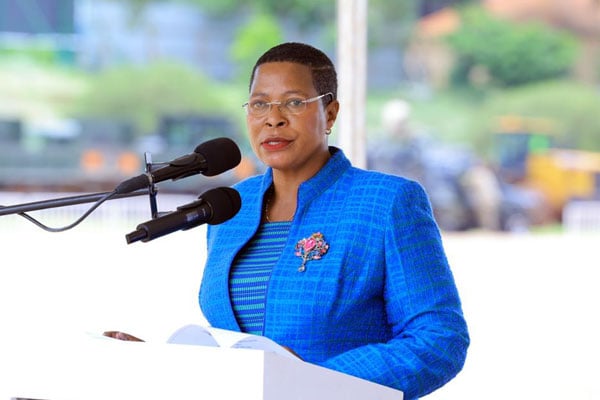EAC seeks to standardise fuel transportation tankers

EAC states say road tankers such as fuel tankers across the region must have the same limit of errors. Photo / File
What you need to know:
- Beyond standardising petroleum transportation takers, the East Africa Community is also seeking to standardise vehicles that transport liquefied petroleum gas, raw materials for soap, and cooking oil production, among others
Representatives from seven East Africa Community (EAC) member states are in Kampala to discuss measures that will lead to standardisation of road tankers, among which include vehicles that transport petroleum products, liquefied petroleum gas, raw materials for soap, and cooking oil production, among others.
The week-long discussion, which started on Monday led by the EAC Secretariat, seeks to harmonise procedures for calibration and verification of road tankers to ensure consistent measurements within the region.
This, the EAC Secretariat noted is a key measure that will facilitate intra-EAC trade and movement of liquefied products across the region.
Ms Stella Apolot, the EAC Secretariat principal standards officer, said yesterday that the harmonisation will largely factor in different legislations across the region to come out with measures that will be easy to implement among member countries.
“We all know the importance of road tankers and we need to ensure that whatever capacity is brought from partner state to another is the same.
For example, if it is fuel, milk or water the calibration of these tankers should be the same,” she said, noting that despite the difference in legal requirements across the region, there is need to facilitate trade by eliminating factors that might create non-tariff barriers.
That is why we are coming up with these procedures, and once they’re in place they will be approved by the East African Standards Committee.
The discussions in Kampala will also lead to development of harmonised procedures for calibration and verification of road tankers, which is in line with the need by UNBS to ensure fairness in trade and accuracy in measurement systems.
In a statement released early this week, Mr John Paul Musimami, the UNBS deputy executive director in charge of compliance, said several issues, including variations in the limits of error during verification, inconsistency in respect to stamping dipsticks and verification charts, high chances of foul play by transporters during delivery such as swapping and cutting of dipsticks, alteration of calibration charts, had been reported, which calls a unified system to eliminate inaccuracies that affect trade.
“We need to eliminate irregularities and inconsistencies during inspections at the borders to facilitate smooth flow of goods within the EAC region which boosts trade,” he said, noting that for instance, the limit of error in Uganda is plus or negative 0.25 percent for both initial and subsequent verification, while in Tanzania it is plus or negative 0.2 percent, which impacts trade within the region.
Each EAC partner state, which includes Uganda, Kenya, Tanzania, Rwanda, DR Congo and South Sudan has its own regulations and procedures for calibration and verification of road tankers, resulting into measurement variations, which may constitute unnecessary technical barriers to trade
Harmonised procedures
EAC states have already agreed to harmonise procedures for stamping such as dipstick stamping and nameplate stamping, treatment of boosters and airbags, calibration charts information, verification provers, and limits of error for verification of road tankers.





